Projects of funding period 2
All six projects consider essential aspects of vector- and tensor-valued surface PDEs and all address modeling as well as numerical issues. The problems considered range from surface fluids to thin elastic structures and from academic benchmark problems to real applications. The individual projects are summarized below.
-
Numerical methods for surface fluids
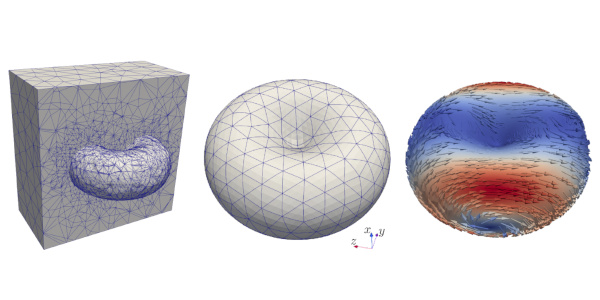
The project considers a class of surface Navier-Stokes equations which are used to model viscous two-dimensional incompressible fluidic surfaces. We restrict to sufficiently smooth closed oriented (evolving) surfaces embedded in . The main topic of the project is the development of efficient and reliable finite element based numerical simulation methods for these surface Navier-Stokes equations. Such methods have been developed for stationary s... Read More
-
Viscoelastic dynamics of the cell cortex
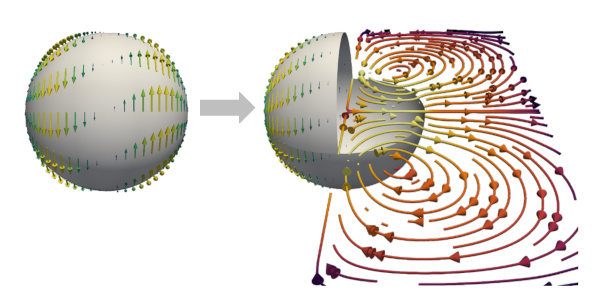
The actin cortex in conjunction with the cell membrane is a thin film that encloses the viscous interior of most animal cells. The actin cortex is a complex viscoelastic material which exhibits active prestress due to inherent microscopic force-dipoles constituted by molecular myosin motor proteins. Observations of cells show that the actin cortex film can form self-organized patterns and actively deform itself. The cortex is thus a key regulator for the emergence of cell shape and vital f... Read More
-
Rate-independent evolution of prestrained plates
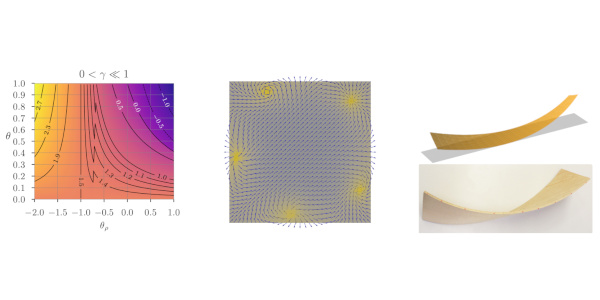
Prestrain has a huge impact on the mechanical behavior of thin elastic plates and films. It can be the result of different physical mechanisms and can be triggered by different stimuli-a property that makes such materials interesting for the fabrication of functional materials with a controlled shape change. Scales range from polymer films of sizes in the (sub-)millimeter range to large composite structures of several meters. An example for the latter are self-shaping wood bilayers, which ... Read More
-
Error estimates for elastic flows
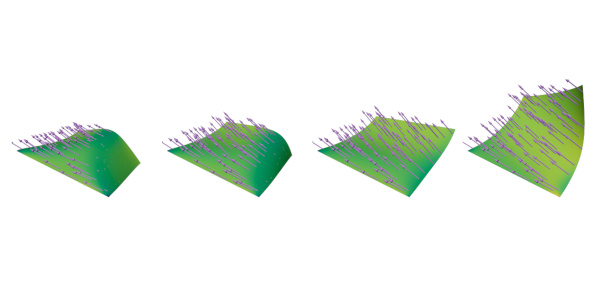
Thin elastic structures lead to a variety of interesting phenomena and applications. Often, two energy stable bending states are used to create a quasistationary switching device or to generate mechanical locomotion. For all of these technical developments large deformations of thin elastic objects are important. Their mathematical modeling leads to constrained bending energies in which the constraint captures the resistance to shearing and stretching effects of thin elastic plates or the ... Read More
-
Ordering and defects on deformable surfaces
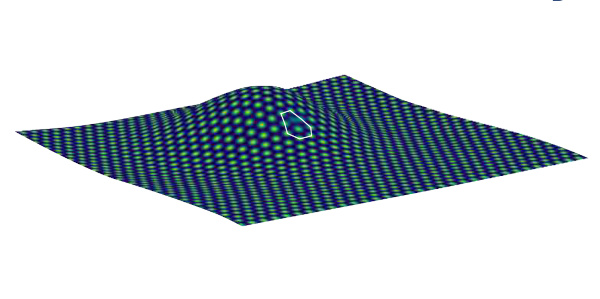
Elastic and plastic properties of thin sheets have been found responsible for peculiar behaviors of biological and physical systems and enabled remarkable technological applications. However, theoretical frameworks that comprehensively study the interplay of deformations, defects, and evolving film morphology, are missing, primarily due to the complexity related to the bridging-scale nature of the emerging phenomena. In this project, we develop a mesoscale framework to study positional ord... Read More
-
Symmetry, length, and tangential constraints
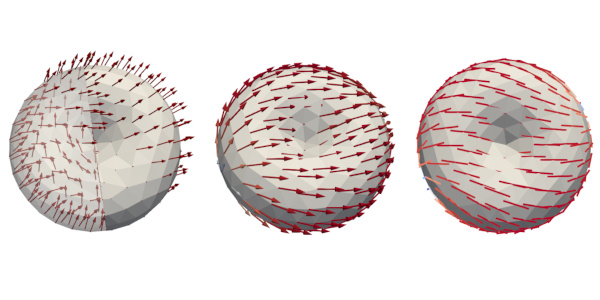
Monolayers of anisometric molecules on curved surfaces show a non-trivial orientational order depending on the shape and symmetry of the molecules but also on the topology and curvature of the domain. The geometry of the surface changes the behavior of the attached particles compared to a flat environment. Physical models represent the preferred microscopically averaged molecular orientation by vectorial or tensorial order parameters with additional constraints, like unit length and rotati... Read More






